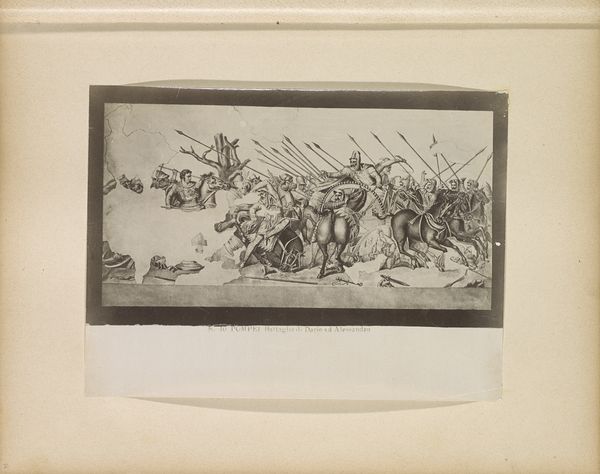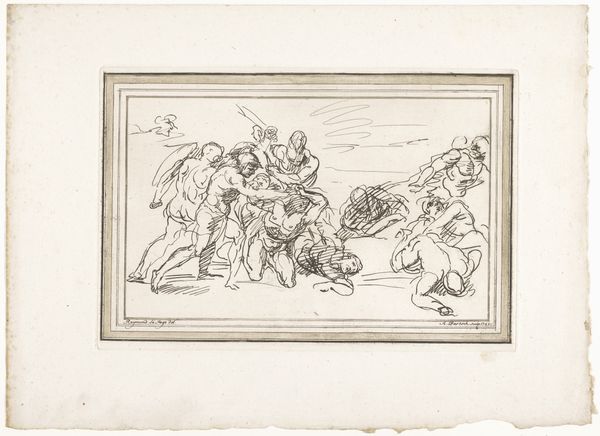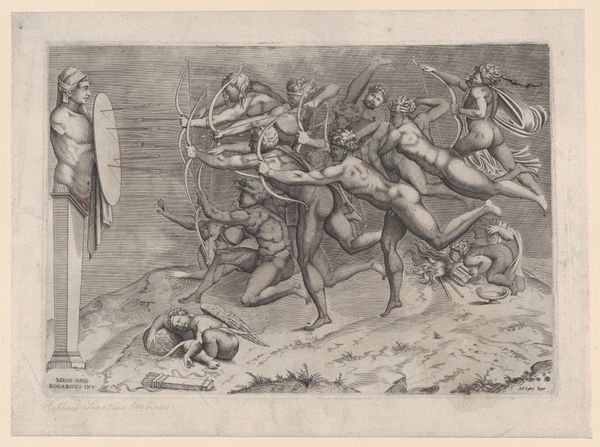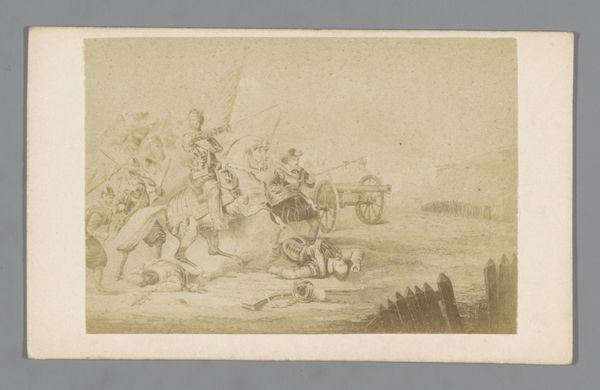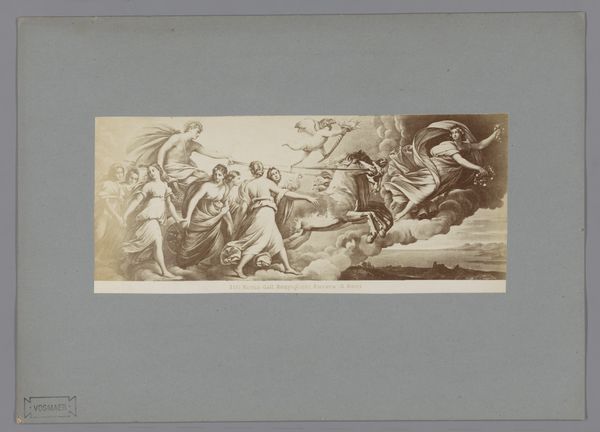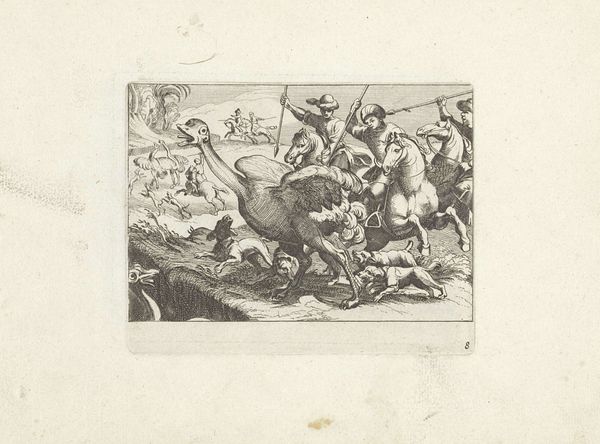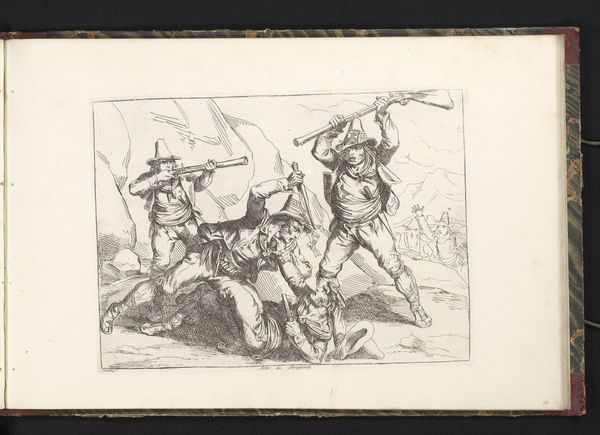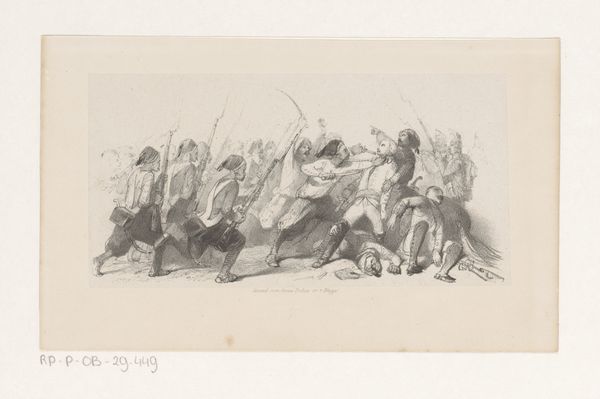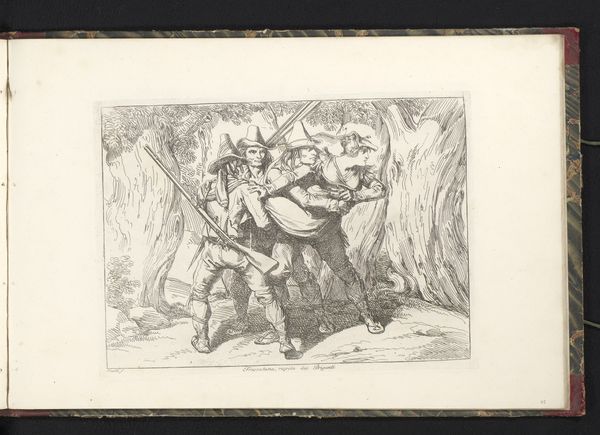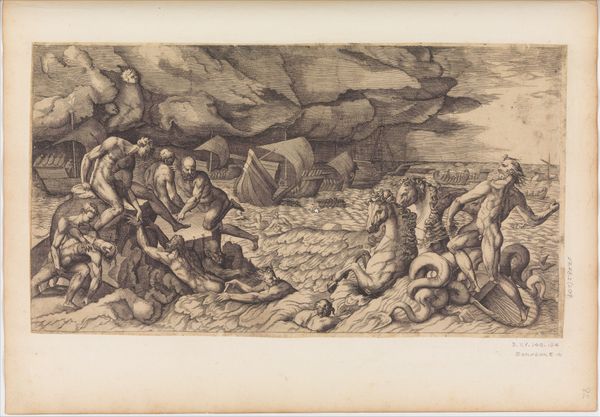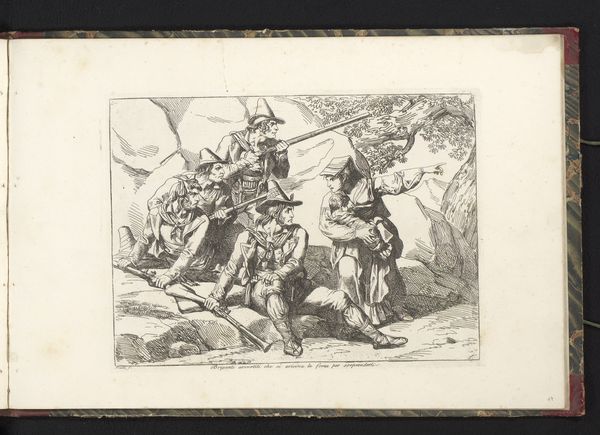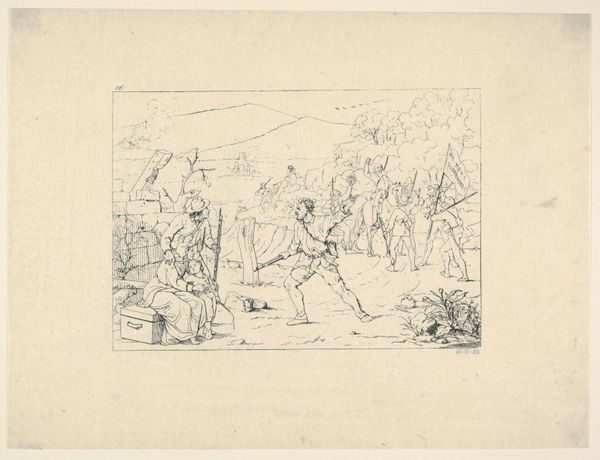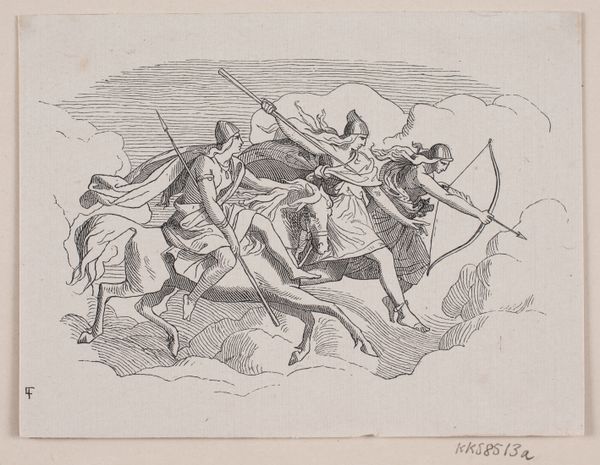
David enthauptet Goliath, rechts das siegreiche Heer der Kinder Israel, links die fliehenden Philister 1625
0:00
0:00
drawing, paper, ink
#
drawing
#
baroque
#
ink painting
#
paper
#
ink
#
history-painting
Copyright: Public Domain
Curator: Looking at Michael Herr's "David beheading Goliath, on the right the victorious army of the children of Israel, on the left the fleeing Philistines" made in 1625, the sprawling composition immediately catches the eye. Editor: Yes, there's an almost frenetic energy, even in this ink drawing on paper. The stark monochrome heightens the drama, making the chaotic scene even more unsettling. Curator: This piece offers a powerful example of how baroque artists visualized biblical narratives through the lens of 17th-century socio-political ideologies. The clear depiction of victory, with David standing triumphant, echoes contemporary power dynamics and the justification of certain actions in the name of religious conviction. Editor: But the violence is…graphic. Even desensitizing. Notice how Goliath's severed head is centered—a visceral display of power that speaks volumes about the era's acceptance, or perhaps even glorification, of brutality, particularly within a patriarchal, Judeo-Christian context. Consider the implication of this image as reinforcing dominant power structures that equated victory with violent subjugation. Curator: Indeed, the way the victorious Israelites are portrayed, as an organized force contrasted against the fleeing, disorganized Philistines, creates a clear dichotomy of 'us' versus 'them.' We need to ask how this image serves to legitimize those in power and dehumanize their opponents through the dissemination of religious propaganda. This isn't just art; it's an ideological tool, contributing to social norms and behaviors of that era. Editor: Exactly, it begs the question of how we contend with the complex ethical dimensions of artwork depicting, even seemingly celebrating, historical violence rooted in religious or cultural narratives, especially given current global events, religious conflict, and identity politics. The work invites discussions about art's responsibilities to present accurate history and avoid romanticizing bloodshed. Curator: Herr's drawing is not just an artistic rendering of a historical moment but rather a testament to the enduring power of images to influence beliefs and justify actions, which we still have to acknowledge and interpret today. Editor: Precisely. Analyzing its political function enables us to challenge its rhetoric, contextualizing its position within ongoing power struggles. It’s art serving as a mirror reflecting the realities of its time—a reflection we still grapple with today.
Comments
No comments
Be the first to comment and join the conversation on the ultimate creative platform.
